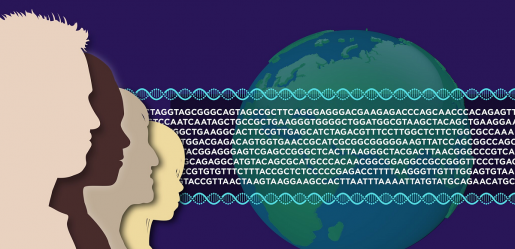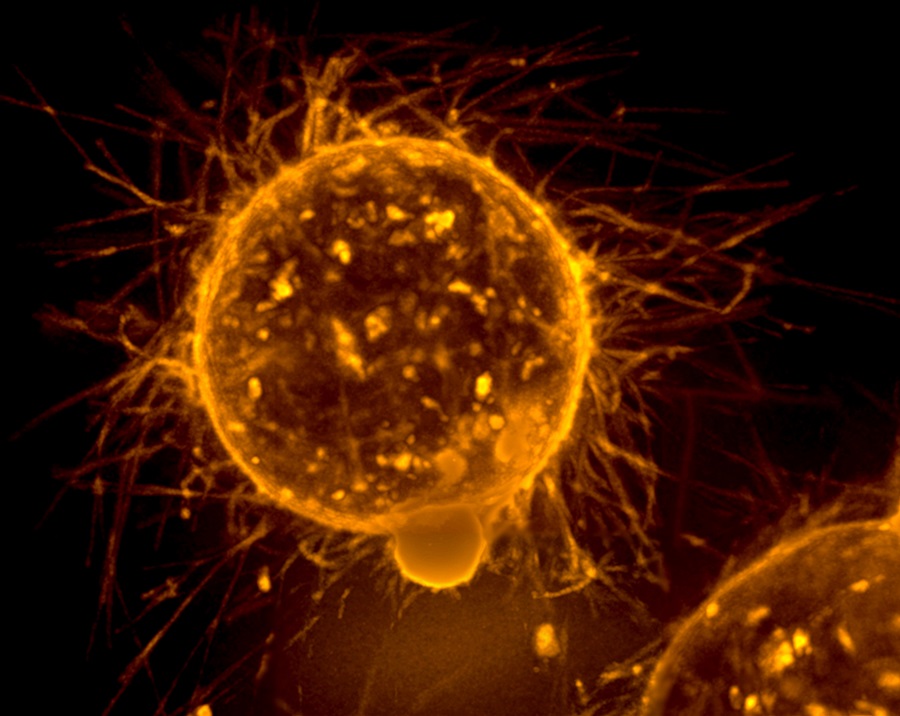New approach to diagnosing genetic diseases using RNA sequencing increases yield
In the world of rare genetic diseases, exome and genome sequencing are two powerful tools used to make a diagnosis. A recent addition to the toolkit, RNA sequencing, has been demonstrated to help researchers narrow down disease candidate variants identified first on exome and genome sequencing. A new study from Baylor College of Medicine finds that starting genetic analysis with RNA sequencing can increase diagnostic yield even further.

Baylor has been a leader in developing clinical applications of exome and genome sequencing, a technique that is now being used in clinics worldwide. Researchers at the National Institutes of Health (NIH) Undiagnosed Diseases Network (UDN) have successfully used exome and genome sequencing to increase the diagnostic rate of rare genetic diseases to about 35 percent.

“That’s impressive because these cases have already had such an extensive workup already,” said Dr. Brendan Lee, corresponding author on the study and professor and chair of molecular and human genetics at Baylor. “The 35 percent diagnostic rate is great, but unfortunately that means there’s still 65 percent that remains undiagnosed.”
Exome and genome sequencing do have limits. Over the years, scientists have identified about 4,000 disease-causing genes and 7,000 associated distinct clinical diseases, but relatively little is known about the roughly 16,000 other genes in the genome. Further, only about 1 or 2 percent of the genome is coding, meaning it is translated into RNA and proteins. Researchers are limited in their ability to interpret genetic changes in the noncoding regions of the genome.
“When a patient’s exome and genome are sequenced, we interpret the results and come up with a list of gene mutations that could cause a disease,” said Lee, the Robert and Janice McNair Endowed Chair in Molecular and Human Genetics at Baylor. “Often, we can’t assign a definitive effect to many DNA mutations because there’s not enough information.”
To assist in interpretation of exome and genome sequencing, the UDN has increasingly turned to RNA sequencing. While exome and genome sequencing identify genetic changes in the DNA, RNA sequencing can reveal the effects of those changes, for example if a gene has lower expression than expected. RNA sequencing can also tell us about the effects of noncoding changes, something that is very important as we transition from exome to genome sequencing.
Trying a new approach
RNA sequencing has been used as a secondary tool to help prioritize disease gene candidates identified with exome and genome sequencing, and it has been shown to increase diagnostic yield to variable degrees. The Baylor team wanted to try a different approach with the UDN cases. Using a novel pipeline developed with collaborators in Germany, they started with the RNA sequencing to first identify unique differences in gene expression and splicing. Researchers could then trace the problem back to a corresponding genetic change in the exome and genome sequencing data.

“This strategy really flips the way we normally approach a case, looking at the end result in the RNA and working backwards to find the cause in the exome or genome. It allows biology to tell us where to look to make a diagnosis,” said Dr. David Murdock, lead author of the study and assistant professor of molecular and human genetics at Baylor.
“We found this RNA sequencing first approach was extremely powerful,” Lee said. “It was able to very rapidly point at the gene we should look at. Moreover, it did so in cases in which we would not have been able to identify the disease gene candidate using exome and genome sequencing alone. If we had used the old way and generated a priority candidate list, these gene mutations would not have even been in the priority list.”
Increased diagnostic yield
The team found that exome and genome sequencing sometimes missed small deletions in genes. However, the RNA sequencing data showed that these deletions could dramatically affect gene expression. RNA sequencing also picked up changes in expression and splicing caused by variants in noncoding regions that would not have been flagged in regular exome and genome sequencing.
“We see lots of changes in the noncoding region, and there’s no way to know if they’re important,” Lee said. “But the RNA sequencing will show an 80 percent decrease in expression related to that gene, and then we can assign causality to that noncoding variant.”
The Baylor study found that beginning with RNA sequencing could increase the diagnostic yield 17 percent from the traditional exome and genome sequencing approach, bringing their overall diagnosis rate to roughly 50 percent. As part of the study, researchers analyzed both skin cells and blood cells and found that skin cells were more informative in diagnosis because of their homogenous nature and better gene expression.
“I see RNA sequencing with this approach as eventually becoming standard practice, especially as we move more from exome to genome sequencing. It allows us to diagnose so many more patients and gives families the answer they’ve been seeking,” Murdock said.
A diagnosis is not black and white. It involves variable amounts of certainty,” Lee said. “The availability of this tool will change the certainty level, improving diagnostic yield and increasing confidence in that diagnosis.”
Read all the details of this work in the Journal of Clinical Investigation.
Other contributors to this work include Hongzheng Dai, Lindsay C. Burrage, Jill A. Rosenfeld, Shamika Ketkar, Michaela F. Müller, Vicente A. Yépez, Julien Gagneur, Pengfei Liu, Shan Chen, Mahim Jain, Gladys Zapata, Carlos A. Bacino, Hsiao-Tuan Chao, Paolo Moretti, William J. Craigen and Neil A. Hanchard. The authors are affiliated with one of more of the following institutions: Baylor College of Medicine, Baylor Genetics, Texas Children’s Hospital, Technical University of Munich, ARS/USDA/Children’s Nutrition Research Center, Jan and Dan Duncan Neurological Research Institute, McNair Medical Institute at The Robert and Janice McNair Foundation, University of Utah and George E. Wahlen Department of Veterans Affairs Medical Center.
This work was supported by the NIH (U01 HG007709) and the BCM Intellectual and Developmental Disabilities Research Center (HD024064) from the Eunice Kennedy Shriver National Institute of Child Health & Human Development.
By Molly Chiu



